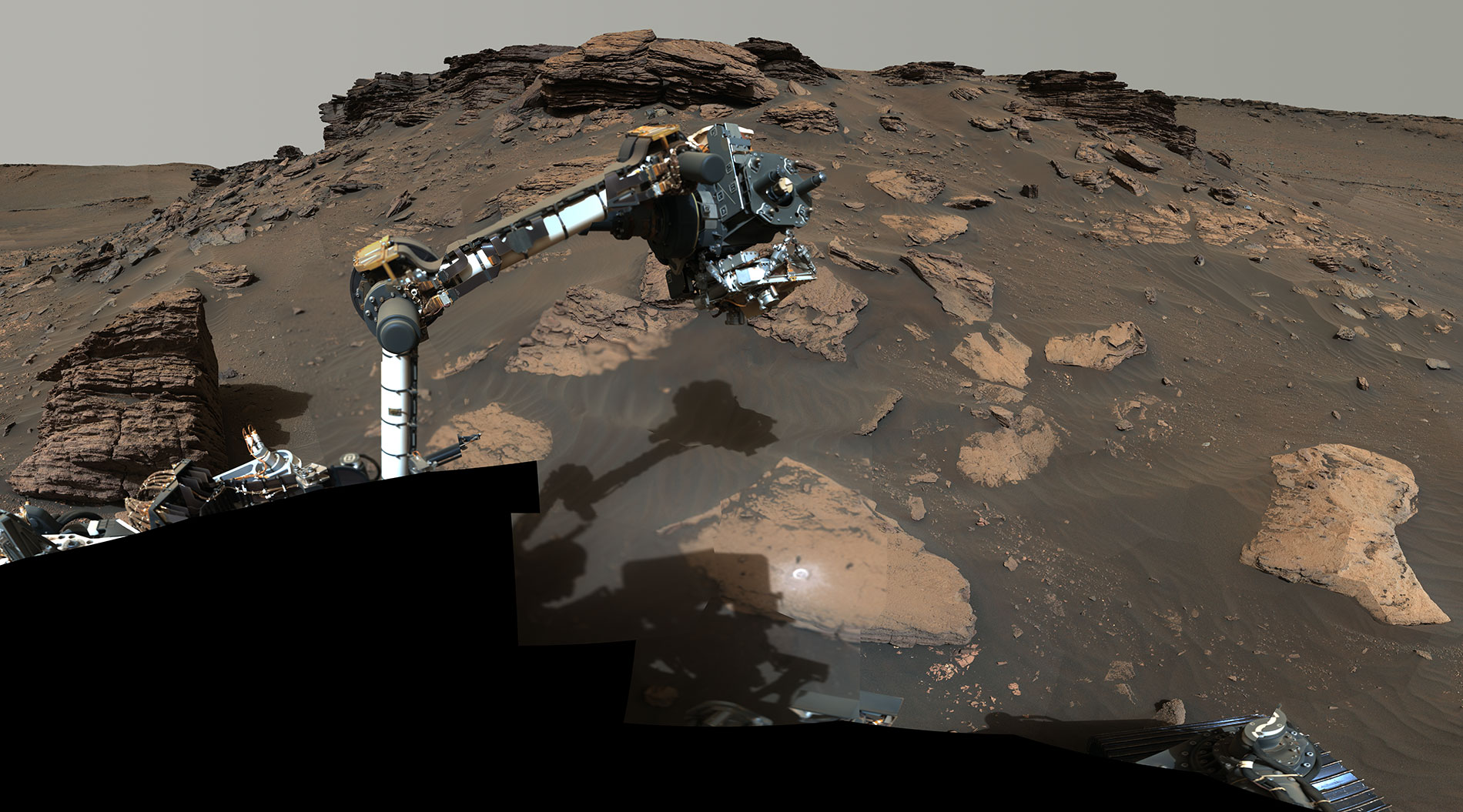There’s a problem with the Perseverance rover. One of its instruments, the laser-shooting SHERLOC, which is mounted on the end of the robotic arm, has a dust cover that is supposed to protect the instrument when it’s not in use. Unfortunately, the cover has been stuck open, and that can allow dust to collect on the sensitive optics. The cover is partially open, so the rover can’t use its laser on rock targets or collect mineral spectroscopy data. NASA engineers are investigating the problem and are hoping to devise a solution.
There are actually two dust covers on SHERLOC (Scanning Habitable Environments with Raman & Luminescence for Organics and Chemicals), which protects the instrument’s cameras, a spectrometer, and the laser. SHERLOC’s mission is to search for organic compounds and minerals that have been altered in watery environments, which may be signs of past microbial life.
The cameras include a black-and-white context camera, along with WATSON (Wide Angle Topographic Sensor for Operations and eNgineering), a color camera for taking close-up images of rock grains and surface textures.
From images and data, engineers for Perseverance determined early this year that the one cover was stuck in a position where some of its operational modes couldn’t function. Right now, WATSON can still operate because it looks through a different aperture than the context camera, but the laser, spectrometer and context camera can’t work.

SHERLOC works by scanning a target from about 2 inches away using an internal fine-motion steering scanner mirror to raster the laser over a small (millimeter-sized) field of view. With deep ultraviolet Raman and fluorescence spectroscopy, the instrument can help differentiate types of organic materials in the object being scanned. During the course of the mission, the instrument has found a wealth of organic materials on Mars by scanning 34 rock targets, creating a total of 261 hyperspectral maps of those targets.
NASA said that to better understand the behavior of the cover’s motor, the team has been sending commands to the instrument that alter the amount of power being fed to it. Over the years, its been amazing how engineers with the Mars rover missions have been able to fix or work around various problems and issues to allow instruments or parts of the rovers to continue to function in some capacity. For example, the Spirit rover lost the use of its right-front wheel in 2006 but mission operators kept it going by driving it backwards.
Even if engineers can’t fix the issue with SHERLOC, that doesn’t mean this type of science can’t be done anymore by Perseverance. SHERLOC is part of a seven-instrument suite on the rover, and fortunately, during development of the mission, the team designed the instrument suite so that Perseverance could still achieve its science objectives should any single instrument fail. There is some overlap among the capabilities of the instruments. Along with SHERLOC, the PIXL (Planetary Instrument for X-ray Lithochemistry) and SuperCam can also perform spectroscopy.

Now over 1,000 sols, or days since the rover landed on Mars nearly three years ago (February 18, 2021), the rover is otherwise operating quite well on its mission to search for signs of ancient microbial life, while characterizing the planet’s geology and past climate, and collecting and caching Martian rock and regolith samples to be retrieved by a future sample return mission.
Perseverance’s older sister, Curiosity, is still going strong after more than 11 years (4,000 sols) on the Red Planet.

